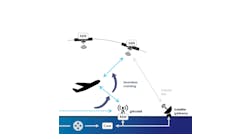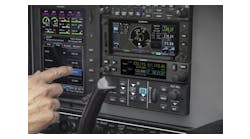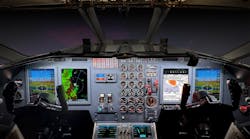The use of composite materials in aircraft is not new, however aircraft manufacturers have transitioned from using composite materials in nonstructural components to more solid laminates used in major structural portions including the fuselage and wings. Composite materials used for aircraft construction has significantly increased over the last three decades. Today both Airbus and Boeing use up to 50 percent composite materials in the latest generations of airliners. And for those of you maintaining their smaller siblings in general aviation, large transport category aircraft are not the only aircraft types to see increasing volumes of composite materials.
In April while attending 2012 MRO Americas, I attended a seminar titled Composite Repair: Preparing for the Demand. A stellar panel comprised of John Welch with Spirit Aerosystems, Michel Bruet with Air France Industries, Dr. Roland Thevenin with Airbus, and Arne Lewis with The Boeing Company, provided their insights into preparing for the composite repair demand on new generation airliners.
Welch explained how 20 years ago many composite repairs were measured in square inches, and how today Spirit Aerosystems has accomplished repairs measured in square feet. One example of large area composite repairs was the inner and outer surfaces of thrust reversers. Welch went on to explain that large area composite repair goes far beyond just successfully performing the repair, having a heavy emphasis on repair substantiation, including repair method detail descriptions, inspection and testing, and development of comprehensive documentation for repair approval.
In order to accomplish this increased knowledge is required of the technicians accomplishing large area repairs: education, training, and practice. Using Welch’s words, “Technician training must be more than generalities of repair to perform large area repairs. Technician training must teach the configuration being repaired … Practicing the repair by methodically repairing, and repeating the repair, flushes out 95 to 96 percent of unknowns in performing large area repairs.”
Maintenance programs for new generation aircraft are seeing a shift from traditional shop and hangar reliance to a more line maintenance philosophy. Michel Bruet with Air France Industries suggested this shift means the competence for accomplishing composite repairs also needs to shift, bringing the competence to the line where it is needed.
Other topics discussed during the session related to bolted versus bonded repair philosophy for large areas, and whether the industry needs a certification recognized by global authorities for composite repair technicians. Arne Lewis of The Boeing Company made this interesting point regarding maintaining a new generation airliner, “When and will the MRO industry become comfortable with working around and repairing a composite fuselage airplane?
On page 22 of this issue I describe FedEx Express’s recently completed composite repair shop at LAX, where they’re responsible for repairs using advanced materials as well as some of the traditional bonding methods. As Tim Wright says on page 28, “If you see composites in your future, learn about them, and embrace them.” Ron




